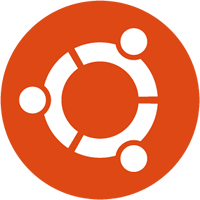So you’ve heard about Linux, but feel overwhelmed by terms like Ubuntu, Fedora, or Debian? Don’t worry! Linux isn’t a single operating system – it’s a family of operating systems called “distributions” (or “distros”). Think of them as different flavors of ice cream – same base ingredients, but unique toppings and textures. Let’s explore the most common types!
🧩 What is a Linux Distribution?
A Linux distro packages the Linux kernel (the core engine) with:
- Software packages (web browsers, office tools)
- Desktop environments (user interface)
- System utilities
- Package managers (app stores)
Different distros prioritize:
- User-friendliness 🖱️ vs. customization ⚙️
- Stability 🛡️ vs. cutting-edge features 🔥
- Proprietary drivers 💿 vs. 100% open-source 🔓
🌳 Major Linux Distribution Families
1. Debian-Based Distros
Origin: Community-driven Debian
Traits: Rock-solid stability, huge software repositories
Package Manager: apt
Popular Variants:
 Ubuntu: Most beginner-friendly! Great hardware support and documentation.
Ubuntu: Most beginner-friendly! Great hardware support and documentation.  Linux Mint: Feels like Windows – perfect for converts.
Linux Mint: Feels like Windows – perfect for converts. Pop!_OS: Optimized for developers and gaming.
2. Red Hat-Based Distros
Origin: Enterprise-focused Red Hat
Traits: Security-focused, corporate support
Package Manager: dnf (Fedora), yum (RHEL)
Popular Variants:
Fedora: Cutting-edge tech (great for developers).
CentOS: Free version of Red Hat Enterprise Linux (RHEL).
3. Arch-Based Distros
Origin: DIY-focused Arch Linux
Traits: “Rolling release” (continuous updates), ultra-customizable
Package Manager: pacman
Popular Variants:
Manjaro: User-friendly Arch alternative.
 EndeavourOS: Pure Arch experience with an easy installer.
EndeavourOS: Pure Arch experience with an easy installer.
4. Independent Distros
openSUSE: Powerful configuration tool (YaST). Choose Leap (stable) or Tumbleweed (rolling).
 Fedora: Not based on Debian/Arch – innovates independently.
Fedora: Not based on Debian/Arch – innovates independently.
🧭 How to Choose Your First Distro?
| Use Case | Recommended Distro | Why? |
|---|---|---|
| Windows/Mac Convert | Linux Mint / Ubuntu | Familiar interface, easy setup |
| Programming/Gaming | Pop!_OS / Fedora | Latest drivers & tools |
| Old Hardware | Lubuntu / Xubuntu | Lightweight, fast performance |
| Learning Linux Deeply | Manjaro / Fedora | Balance of power & accessibility |
💡 Key Takeaway
> “There’s no best distro – only the best for you. Try a few using Live USBs (test without installing!) before deciding. Most are free, so experiment!”
🔗 Next Steps:
- Download Ubuntu or Linux Mint
- Create a bootable USB with BalenaEtcher
- Boot from USB and click “Try Linux”!
(Image: Linux distribution timeline showing relationships between distros)
Have questions? Ask in the comments below! 🐧